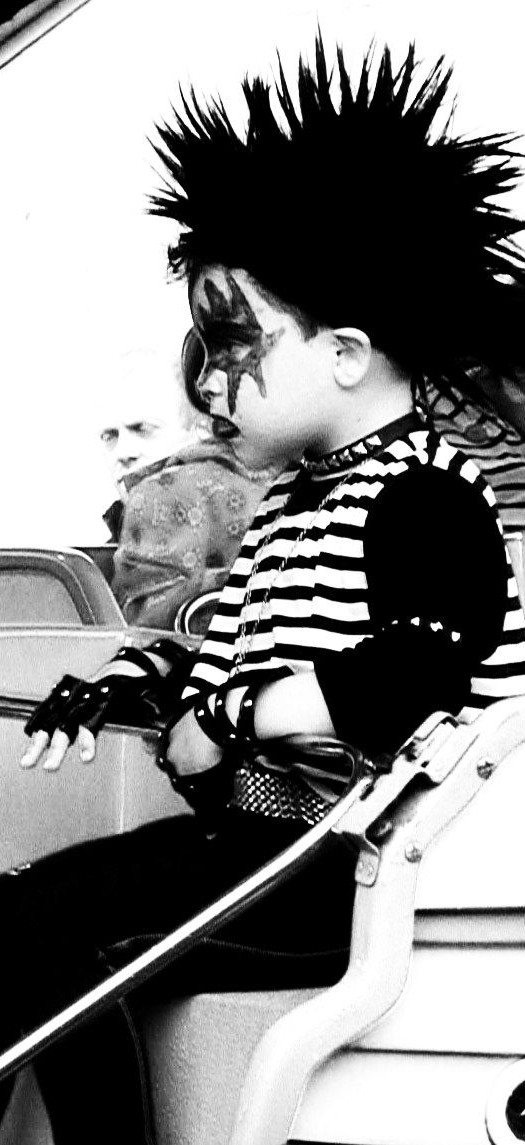 Michael Fischer’s fiction has appeared in Beloit Fiction Journal, Green Mountains Review, Bayou, and several other places. His manuscript is titled “Crybaby Lane,” and he is a Visiting Assistant Professor in English at Marshall University.
Michael Fischer’s fiction has appeared in Beloit Fiction Journal, Green Mountains Review, Bayou, and several other places. His manuscript is titled “Crybaby Lane,” and he is a Visiting Assistant Professor in English at Marshall University.
.
.
Michael, “Aim for the Moon” is part of a story cycle project of yours, the setting of which is “Mid-State Psychiatric.” What inspired the project?
In 1992, at the age of fourteen, I was committed to Dorothea Dix Hospital in Raleigh, North Carolina for a year-and-a-half. Mid-State is the fictional psychiatric hospital loosely based on my experiences at Dix in the early 90s and other state mental hospitals I’ve researched in the South.
Originally, I set the stories at Dix, but it didn’t work. The burden to “get the details right”—down to every street and ward name—suffocated my imagination and became a crutch to avoid brutal honesty. For instance, when the book was set at Dix, I would often say—in the most self-congratulatory way possible—“I must represent these people—my people—who don’t have a voice! I must help fight the battle against mental illness stigma!”
But I wasn’t representing anyone properly, because most of the stories were tepid, safe, and agenda-driven—the kind of cowardly work with a watered-down point to prove. The characters lacked quirks and eccentricities because I worried they’d be read as stereotypes. The book was humorless because I worried readers would scold me for using humor alongside disability, as if disabled people should be denied one of life’s greatest pleasures—laughter. The language was voiceless and plodding because I worried readers would associate “voicey-ness” with mental illness clichés. Many anti-stigma movements whitewash or sanitize mental illness—even though it’s more offensive to deny disabled people their “differences”—and the worst of that discourse snuck into my lifeless prose. Eventually, I realized it’s my job to give voice to my imagination.
In “The Things They Carried,” Tim O’Brien distinguishes “story truth” from “happening truth” when writing about the traumas of war. A “true story,” he says, “makes the stomach believe.” My book evolved from a simplistic political agenda and selfish need to express myself to a work indebted to the imagination and the full humanity of the state mental hospital experience. Hopefully, I’m now aiming for readers’ stomachs instead of their sympathies.
Thanks to your online publications, I’m familiar with a few pieces in the manuscript, including “The Sidewalk Schizophrenic,” which I had the privilege of publishing at LITnIMAGE. A number of characters emerge. Is there one you might consider the central protagonist?
The protagonist is the “Scared Boy” in “Here, Everywhere, Ghosts” (at Wigleaf) who is later nicknamed “Bird” in “Sounds of Dolphins” (at Waccamaw). But your question is interesting, because the third-person used in “The Sidewalk Schizophrenic” is filtered through the protagonist as well—even though he’s not an active character in the story and The Sidewalk Schizophrenic also shares the POV to a degree—and the third-person used in “Here, Everywhere, Ghosts” and “Sounds of Dolphins” is inflected in a way that’s close to first-person (free indirect discourse?). There’s a mythical tone in all three stories that somehow inflects the protagonist as a larger-than-life presence hovering across the book. In “The Sidewalk Schizophrenic,” the protagonist is just assimilated through tone, if that makes sense, and I’m sure it will make more sense when/if the stories are read together. It’s a technique I learned from Marilynne Robinson in Housekeeping. Ruthie is both the protagonist and a hovering, Emersonian, transparent eyeball narrator narrating with the mythical awareness that she’s narrating “from above,” and much of this is achieved through tone and an implied distance from the novel’s events.
Considering the sobering subject matter and eccentric cast of characters, developing a narrative tone must be tricky. How have you gone about establishing that?
Voice comes natural to me. I’ve always had a good ear for voice and the off kilter. Many of my favorite contemporary writers write voice and the off kilter well: Mark Richard, Lewis Nordan, Marilynne Robinson, Jaimy Gordon, George Singleton, Dale Ray Phillips. I also grew up in a region that values the oral as much as the written, where sound and intonation mean everything and people are often marked by their dialect. We also love our freaks.
The biggest challenge has actually been writing the stories to both stand alone and work as part of a larger whole. I love the story cycle, but I can’t wait to write a collection where I’m not obligated to write a certain story to interact with another one, a collection where the linkage or causality between stories is more loosely defined through a general place, theme, or style. It’ll also be easier to place those stories in journals. Many editors can sense that my stories are part of something larger in a more intimate way than the stories they typically accept, which I understand, but it’s extremely difficult for me to imagine those stories in any other way because the book is so assimilated into my blood.
“Aim for the Moon” is told in second-person, unlike other stories in the collection I’ve read. Does the POV shift throughout the work? Also, what are your considerations in tying the stories together, in determining the project’s structure, style, and form?
“Aim for The Moon” is the only second-person story in the cycle. Right now, it precedes the final story, “Summer Jobs & Hope” (at Hot Metal Bridge). I used the second-person in “Aim for the Moon” as an intuitive transition between the previous stories and “Summer Jobs & Hope.” The second-person here adds a different and unique tonal and perspective shift (compared to the rest of the book) to signal the forthcoming final note in “Summer Jobs & Hope.”
Shame is obviously a significant theme in “Aim for the Moon,” but there’s a wisdom in “Summer Jobs & Hope” that embraces the shame in “Aim for the Moon” for positive ends, which is established in the final story’s opening line: “Back then, we weren’t always ashamed.” As if to say, we embrace our mental illnesses, daily humiliations, “weirdness,” and poverty. It’s similar to what Sandra Cisneros does in “House on Mango Street,” also a story cycle. Esperanza realizes that the shame of poverty can be used positively to improve her community through writing, that her experiences are a blessing: “I put it down on paper and then the ghost does not ache so much” (“Mango Says Goodbye Sometimes” 110). My book, I hope, operates similarly and completes the protagonist’s coming-of-age via a realization that a life of self-examination trumps a life of material and superficial wealth. Esperanza “will always be Mango Street” (“The Three Sisters” 105) and my protagonist will always be Mid-State—and I will always be Dorothea Dix, even though the hospital is now closed and the property will soon fall into the hands of developers.
What is the status of your project, Michael? Are you still writing new material or mostly editing and revising at this point?
I’m tweaking here and there, but I’m mostly finished. I’ve already sent the book out to a few places, and am still looking for more possible destinations. Right now, I’m suffering the typical post-book depression, where I don’t want to let go of my characters and this world and start something new. It’s been tough, but hopefully I’ll start something new soon.
Thanks, Michael. Is there anything else you’d like to mention or explain to readers?
Yes—that state hospitals (the ones that still exist) are more complex and three-dimensional than what you see in movies and popular culture. There is poverty, degradation, and abuse—all of which I tackle in the book—but there is also an overwhelming sense of humanity and a strong sense of community, similar to a closely-knit neighborhood. At Dix, the children’s ward staff threw us holiday parties and took us on “store trips” to spend our allowance. Often, I wonder what those people are doing, and if they realize the difference they made in all our lives. There was one staff member, a woman, who took a particular interest in me, and I wonder what’s become of her. There’s another one, a man, who used to play chess with me in the day room, and I wonder what’s become of him, too. So, my book is different in that it conceptualizes the mental hospital as a particular community or place—a complex ecosystem—comprised of staff, doctors, nurses, and patients, rather than a mere haunted holding tank or snake pit for a few misunderstood, lost souls and oppressive staff.
Read Michael’s “Aim for the Moon” from his manuscript in progress, Crybaby Lane.
